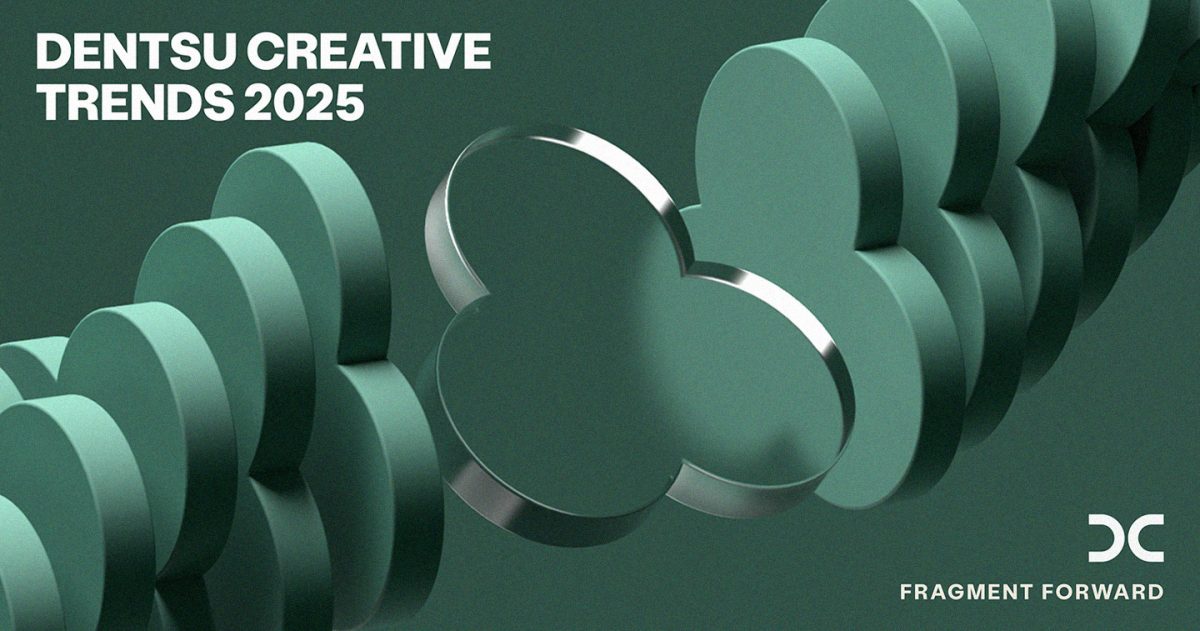TOKYO, JAPAN — Dentsu Creative has launched its 2025 Trends Report, “Fragment Forward,” an in-depth exploration of the forces impacting today’s cultural, economic, and technological landscapes.
The 2025 trends report reflects a fragmented world where shared experiences and aspirations are growing scarcer, shaped by long periods of isolation, the cost of living crisis and of course, a fragmented media landscape. The report asks not only what brands and businesses need to win in the age of the algorithm, but what humans need to thrive in a world where old certainties are crumbling, and new possibilities are emerging.
Technology advances, yet quality of life has not kept pace, leaving younger generations unable to meet the same milestones and aspirations as their elders. Some find promise in the expanding “passion economy,” while others seek comfort by embracing traditional values and practices. Older generations embrace miracle drugs, “silver start ups” are booming, while younger generations are impatient to get started, questioning the value of a conventional education. In an unpredictable future, many prioritize the now, the moment, the vibes; embracing personal wellbeing, simple pleasures, and financial freedom over constant striving.
“Fragment Forward” explores five trends shaped by the age of the algorithm, examining the implications for brands, businesses and individuals and exploring both timeless human desires and their most timely and trending expressions.
Abbey Klaassen, Global Brand President of Dentsu Creative, explained: “Winning in the age of the algorithm means winning an outsized share of culture, not just a robust share of voice. Our work with Nutter Butter, for example, understands how to hack the weird and wonderful side of internet culture to revive the fortunes of a 55 year old cookie brand. The challenge brands face in the age of the algorithm is that it is very easy for all highly optimised content to start to look the same – so when we think about the efficiency AI brings us we also need to blend AI-Assisted production with craft and brand distinctiveness. Our work with Adobe is helping brands make AI work for them, rather than contributing to a sea of sameness.”
Yasu Sasaki, Global Chief Creative Officer of dentsu, said: “As a creative, I’m constantly looking to the future, but inspired as well by the craft and beauty of the past. Some of the most innovative projects we’ve been involved in combine leading edge technology with the simplest and most human impulses; like Hugtics, a project that enables users to give themselves a hug. Or the “Upcycling Possibility” project which combines the traditional art of Kintsugi with circuitry and electronics to create an entirely new drinking experience.”
Pats McDonald, Global CSO at Dentsu Creative, added: “As we look around, we see a world where marketers and innovators are using all manner of tactics to try to engineer the sense of togetherness we once perhaps took for granted. From innovative wearables to social experiments to the power of nostalgia, there is a huge drive to fill what we call the “togetherness deficit”. Which provides a huge challenge, and opportunity for the industry; to create ideas and platforms that connect brands to culture, businesses to customers and communities to one another.”
Amit Wadhwa, Chief Executive Officer, South Asia for Dentsu Creative, also explained: “In an age where technology and culture intersect at every turn, the 2025 Trends Report captures the evolving ways people live, connect, and define themselves. From reimagining what a fulfilling life looks like to navigating the ever-blurring lines between generations, these trends reflect a world in flux—one where shared aspirations are fewer but possibilities are endless. As we confront the challenges of algorithms shaping content and a growing togetherness deficit, the report offers insights into how brands, businesses, and individuals can thrive. It reminds us that while technology drives change, it’s human creativity and connection that will ultimately shape the future.”
The 2025 Trends Report dives into five key themes reshaping the future:
- The “Good Enough” Life – Redefining what it means to live well in a world where old milestones are less achievable, and shared aspirations are fewer.
- The Togetherness Deficit – Exploring the new technologies, experiences and narratives emerging in our attempts to reignite a lost sense of togetherness.
- Generation Blur –A world where old generational boundaries are much less accurate predictors of attitudes, behaviour, or affinity.
- Curiouser and Curiouser –With all the world’s content available at the touch of a button, consumers are exploring compelling stories across culture and languages.
- Algorithms and Blues – Unpacking a world where more and more of the content we see is shaped by the algorithm and crafted by AI.
The report draws from insights across Dentsu Creative’s global network, showcasing actionable opportunities for brands to engage in a more culturally sensitive, connected, and inclusive world. Each trend is accompanied by case studies and detailed sub-trends, equipping brands with the knowledge they need to navigate a market where consumer priorities are continually evolving.
Here is the link to the report: https://www.dentsucreative.com/news/dentsu-creative-trends-2025








